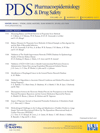Validation of ICD-9-CM codes to identify gastrointestinal perforation events in administrative claims data among hospitalized rheumatoid arthritis patients
ABSTRACT
Purpose
To validate, using physician review of abstracted medical chart data as a gold standard, a claims-based algorithm developed to identify gastrointestinal (GI) perforation cases among rheumatoid arthritis (RA) patients.
Methods
Patients with established RA, aged 18 years or older with hospital admissions between January 2004 and September 2009, were selected from a large US-hospital-based database. An algorithm with International Classification of Diseases, Ninth Revision, Clinical Modification (ICD-9-CM) diagnosis codes for GI perforation and combinations of GI-related diagnosis codes and Current Procedural Terminology (CPT-4) procedure codes for relevant GI surgeries was used to identify potential GI perforation cases. Two senior experienced specialist physicians independently reviewed abstracted chart data and classified cases as confirmed or unconfirmed GI perforations. Positive predictive values (PPVs) to identify confirmed GI perforation were calculated and stratified by upper versus lower GI tract.
Results
Overall, 86 of 92 GI perforation cases were confirmed, yielding an overall PPV of 94% (95%confidence interval [CI] = 86%–98%). PPV was 100% (95%CI = 100%–100%) for upper GI perforation (esophagus, stomach) and 91% (95%CI = 90%–97%) for lower GI perforation (small intestine, PPV = 100%; large intestine, PPV = 94%; unspecified lower GI, PPV = 89%).
Conclusions
This algorithm, consisting of a combination of ICD-9-CM diagnosis and CPT-4 codes, could be used in future safety studies to evaluate GI perforation risk factors in RA patients. Copyright © 2011 John Wiley & Sons, Ltd.




